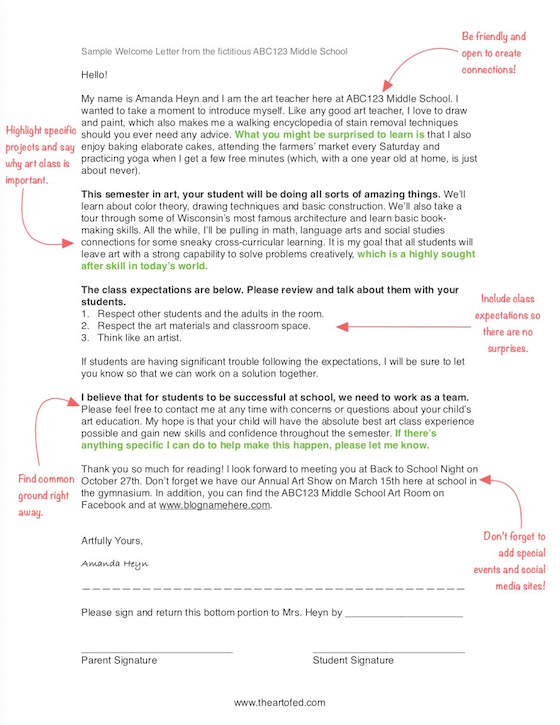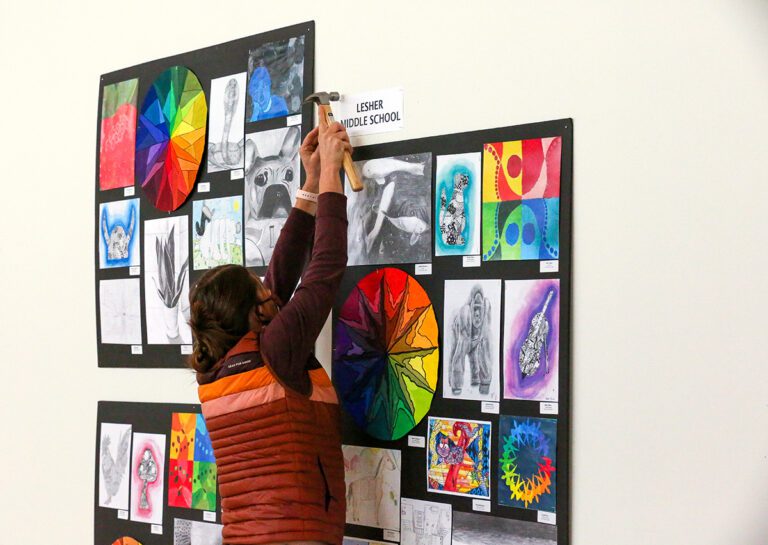We’re in that weird time of year where some folks (hi Elementary!) keep chugging along, while others (looking at you Middle and High School!) may be in a whirlwind of activity as classes change at the quarter or semester mark.
So, today, I’d like to talk about something that you can use at the beginning of your time with students to really make an impact: The Welcome Letter.
A welcome letter is not a syllabus. It is not a blog post and it is not a status update. A welcome letter is a physical letter you send home with students in which you introduce yourself to students’ families. It is a powerful tool and it’s one of the suggestions I’ll mention during my conference presentation about parents at the end of this month.
A welcome letter may be a single sheet of paper, but it has the potential to change how parents see your class and therefore, change the level of support your receive.
A welcome letter may be a single sheet of paper, but it has the potential to change how parents see your class and therefore, change the level of support your receive.
A welcome letter says “Hi.” It says, “This is who I am and this is what I’m about.” It says, “The art room is a remarkable place where students hone a variety of skills to produce amazing work.” It says, “I have high expectations for my students.” But, perhaps most importantly, it says, “I’m here to listen and I care about your child.”
So, how do you write an amazing welcome letter? I suggest the following format.

Introduce Yourself
This is the section where you want to tell parents and/or caregivers about yourself. Tell them about your hobbies outside of the art room and teaching. Do you speak another language? Love to garden? Play in a rock band? Discovering commonalities helps people build relationships and trust. Be candid and funny to create a sense of approachability.
Introduce Your Class
Once you have your reader’s attention, you want to let him or her know about your class. Remember, this is not a syllabus, but a quick overview of your time with students, including your expectations. Briefly share a few things students will be doing in your class and clearly state your class rules and consequences. The intention here is to get parents excited about work they may see coming home as well as let them know that art is a rigorous class that they should take seriously.
Communicate You Care
Take a sentence or two to say how much you look forward to working with their student (even if you had him before in 7th grade and you know you’re going to be dealing with a chatterbox 😉 ). State that your goal is to help their student have the best possible time in art. Stating this common ground upfront will go a long way should issues arise.
Provide Important Information
The welcome letter is a great place to add information such as your email and school phone number and any social media sites you have for your classroom. It’s also the perfect place to promote art shows or fine arts nights you may put on at your school.
Sign but DO NOT Return
I’ve seen many parent letters that ask parents to sign the bottom then return the letter to school. Wait. What? What good does that do if the parent no longer has the information? Instead, I suggest using a dotted line. Ask parents to sign saying they’ve read through the information, then cut off the slip at the bottom for students to return.
Sending a welcome letter home is one of my favorite things to do in the art room. Why? Because it makes sure that everyone is on the same page. It allows parents to put a name to a face and a face to a class. Sending a simple welcome letter home during the first week of class can be a powerful advocacy tool for your classroom.
Middle and High School teachers, do you send home a welcome letter when your classes switch?
Elementary teachers, do you send a letter home at the beginning of the year? What sorts of things do you include?
Magazine articles and podcasts are opinions of professional education contributors and do not necessarily represent the position of the Art of Education University (AOEU) or its academic offerings. Contributors use terms in the way they are most often talked about in the scope of their educational experiences.




